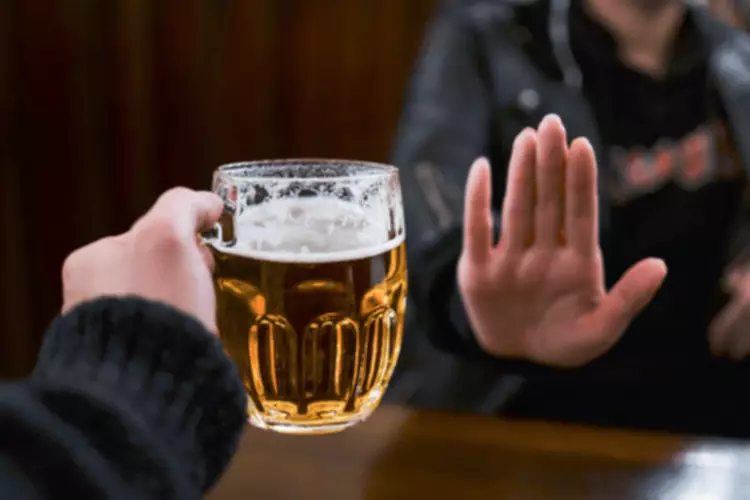
Two parts of the brain are affected during this stage — the basal ganglia and the extended amygdala. The basal ganglia becomes less active to start, resulting in the individual being unable to feel the pleasures they may typically experience in life. Next, the extended amygdala, the brain’s stress system, undergoes more activity, Sober living house increasing feelings of unease, anxiety, and irritability. It occurs when a person stops taking drugs and begins to experience withdrawal symptoms.
Alcohol or Drug Dependence (the Addiction Stage)
If you have a co-occurring mental health disorder, like anxiety, depression, post-traumatic stress disorder, or any other mental illness, we can help. Catalina Behavioral Health provides integrated treatment for those experiencing both addiction and mental health concerns, as recommended by the Substance Abuse and Mental Health Services Administration. At this point in time, you will not yet have experienced negative effects from using drugs or alcohol; only the desirable or pleasurable feelings and effects.

Stage 4: Dependence

Most of these individuals already believed his hypothesized progression of alcohol use disorder. Second, a number of the signature markers in the stages, such as blackouts, a complete loss of control over alcohol use, etc., are not universally recognized in individuals who may even have severe alcohol use disorders. In addition, Jellinek’s original model did not apply to women who may actually demonstrate a slightly different progression in addictive behaviors than men.
Specialty Therapies
- Finally, there is very little empirical research evidence to support Jellinek’s model of the development and progression of alcohol use disorder.
- Learning to recognize the addiction cycle is one of the easiest ways to understand addiction.
- However, detox alone isn’t enough—it only addresses the physical aspects of addiction.
- While it is great to get support early on if possible, it’s never too late to seek help.
Humphreys lives out the principles of the twelfth step that Alcoholics Anonymous teaches in her everyday life — sharing the message of recovery —Through her work in GR. She witnesses others bloom, which gives passion and purpose to her recovery. These organizations want students on campus to know that with support from OU, these programs reduce stigma and provide a welcoming space for all students. GR aims to be a “household name” at OU that the campus community takes pride in and recoverees feel comfortable with. Grizz Recovery, established in 2016, initially aimed to support students through Alcoholics https://ecosoberhouse.com/article/the-cycle-of-addiction-and-how-to-break-it/ Anonymous, and meetings similar, is a Collegiate Recovery Program (CRP) on OU’s campus. GR is registered with the Association of Recovery in Higher Education, focused on providing a community to support students in their substance use recovery.
Does Alcohol Show Up on a Drug Test?
Professional treatment is crucial for those facing drug or alcohol dependence. For someone who goes on to engage in chronic misuse of prescription medications, this could also refer to around the time that you start using the drug for a medical purpose, like physical pain caused by surgery. During the first stage of addiction, you may try a substance for the first time cycle of addiction or use it casually. You may drink alcohol here and there, or you might try a substance like cocaine for the first time at around this stage. The experimentation stage of addiction marks the transition from initial use to exploring substances more intentionally, influenced by social pressures and easy access to substances. Recognizing and comprehending these stages is essential for addicts, their loved ones, and healthcare professionals striving to provide effective support and intervention.
Health and Well-being Concerns

Sometimes, the initial treatment is not quite right, or the person starts by trying to quit without help, and over time, control is lost and the person returns to substance use. However, this is not an indication that the person has failed, only that treatment needs to be adjusted. In general, experiencing 2-3 of these symptoms is considered a mild substance use disorder. If the person is experiencing 6 or more of the symptoms, it indicates a severe substance use disorder.
- Your addiction is not a result of a lack of willpower or strength; rather, it’s caused by uncontrollable changes in the brain.
- (7) The symptoms and implications of drug addiction vary depending on the type of drug they’re using.
- Reach out to AAC to connect with a knowledgeable and compassionate admissions navigator, who can answer your questions, explain your options, and help you begin your journey to recovery.
- First, Jellinek used a very small sample of AA members to validate the stages in his model.
What Role Does Tolerance Play in the Cycle of Addiction?
- People who do not have a problem may never surpass stage one–for example, they might be able to drink casually without ever progressing to the abuse or misuse stage.
- The brain enters a similar panic when it has gone an extended period of time without the substance it relies on to function.
- Tolerance refers to the body’s or brain’s reduced response to the effects of a substance after repeated or prolonged use.
- Eventually, the ability of a given dose of the drug to release dopamine decreases as a result of changes in the brain, and a person must then use more drug to get the same degree of pleasure.
- For professionals and veterans, additional triggers such as work-related stress, exposure to trauma, or the pressure to perform contribute to initial substance use.
Drugs that cause addiction elicit pleasurable and enjoyable feelings by activating the brain’s reward and motivational systems through the release of dopamine in specific brain regions. The pleasurable feelings may lead a person to use the drug more frequently. Eventually, the ability of a given dose of the drug to release dopamine decreases as a result of changes in the brain, and a person must then use more drug to get the same degree of pleasure. It is impossible to separate both the physical and mental aspects of the development of any substance use disorder, and stage models typically combine both physical and psychological developments within the stage. First, Jellinek used a very small sample of AA members to validate the stages in his model.


